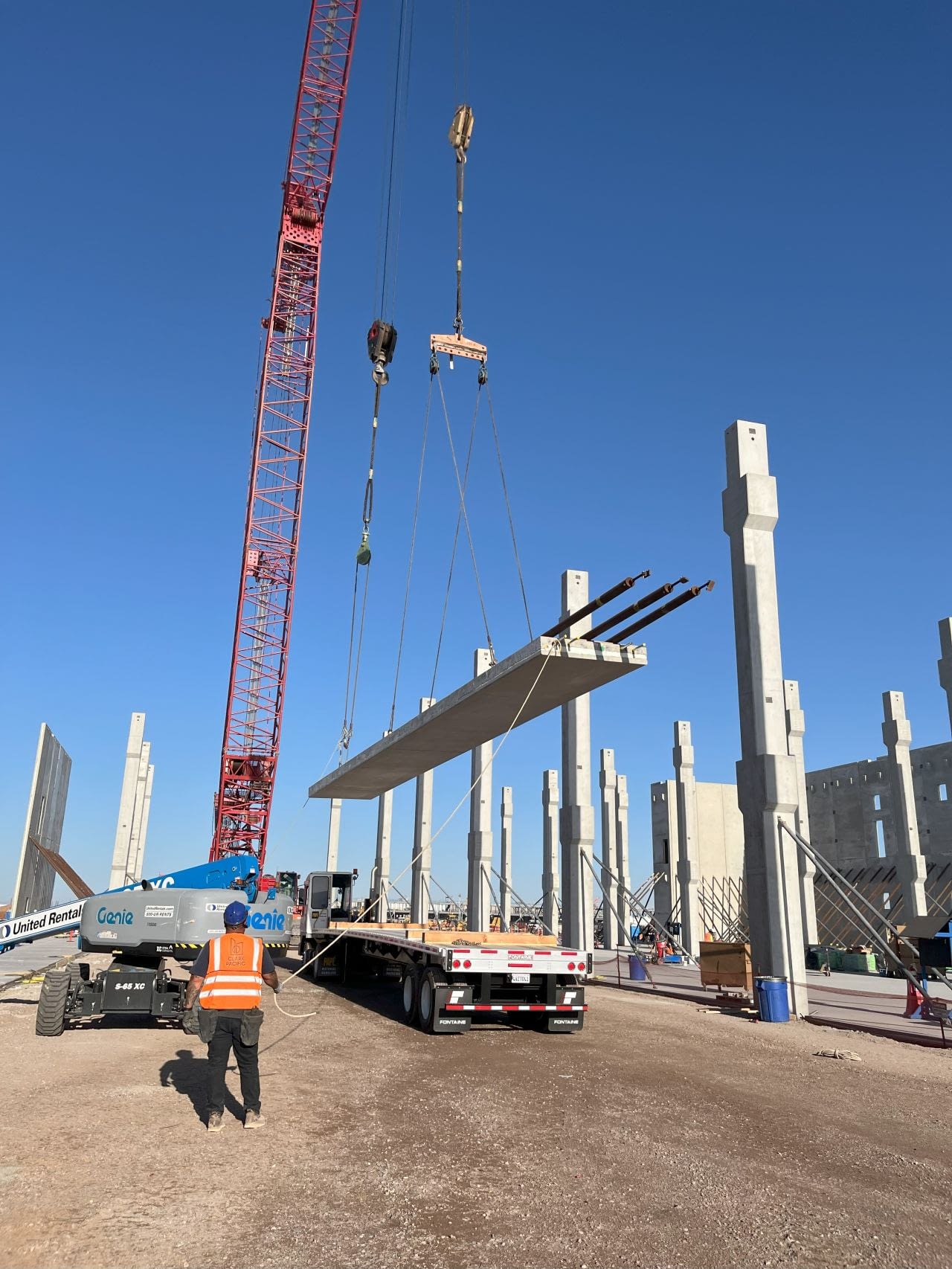The concept of access to higher education is taking on a new meaning at California State University, Los Angeles. A 90 ft tall tower and a pedestrian bridge are now helping students move between a set of three new dormitory buildings and their residents’ main classrooms, located 80 ft above the dorms, atop a steep hill. Constructed on a lower part of the campus, the new dormitories now have access to the main classroom buildings via the tower, which features two elevators and a staircase, notes Aldrin Orue, S.E., a principal in the Los Angeles office of KPFF, which was the structural engineer on the tower, bridge, and dorms.
The site of the new Student Housing East dorms — three structurally separate buildings — and the adjoining but freestanding tower and pedestrian bridge had previously been a surface parking lot on the northeastern side of the campus, near the Interstate 710 freeway.

The route from the parking lot up the hill to the main campus had involved climbing a long series of concrete stairs — nicknamed “Cardiac Hill” — that were not easily used by students with disabilities. So the tower’s elevators are intended to provide universal access, Orue explains.
The roughly 120 ft long pedestrian bridge spans the gap from the western face of the tower to an abutment constructed atop the hill, near the campus’s Circle Drive.
Climbing up, drilling down
A report from the project’s geotechnical engineer — Langan, based in Parsippany, New Jersey — determined that the site featured undocumented fill soils generally comprising moist clay, sand, and/or silt underlying the existing asphaltic concrete and aggregate base to a depth of approximately 20 ft, explains Gary Duncan, S.E., a KPFF associate. Underlying the undocumented fill were alluvial soils and, farther down, bedrock consisting of silty claystone, sandstone, siltstone, and shale.
As such, the tower is supported on a roughly 3 ft thick reinforced-concrete mat foundation and 24 in. diameter cast-in-place drilled hole reinforced-concrete piles approximately 50 to 60 ft long, says Rodrigo Toro Pavez, P.E., S.E., M.ASCE, a KPFF associate.
The piles were needed to “nail down the tower to the ground,” Orue says, because of the site’s poor soil conditions and the large overturning forces generated by the “skinny” structure, which measures about 25 ft wide in the east-west direction and 36 ft wide in the north-south direction. The piles were also necessary because the site is a seismically active area — close to several currently active faults — that has historically been affected by generally moderate to occasionally high levels of ground motion, Duncan adds.
Spanning and sliding
The tower is clad in white precast concrete panels. It features special concentric-braced steel frames on three sides — north, south, and east — and special moment frames on the western side, providing access to and from the elevator doors facing the main campus, says Toro Pavez.
Spanning west to east, the pedestrian bridge is a steel truss box that measures roughly 10 ft wide by 10 ft high, says Toro Pavez. The deck is made from precast concrete planks, and a steel mesh for safety surrounds the side walls and the upper part of the bridge; there is no solid roof to the crossing.
The bridge is structurally tied to the tower on its eastern end. At the western end, the bridge connects to a cast-in-place concrete abutment founded on 70 ft long concrete micropiles. A slide bearing joint at the abutment enables the structure to move in the longitudinal east-west direction, Orue explains, but the crossing is restrained in the transverse north-south direction.
Piers and prefabbed panels
The Student Housing East dorms feature a trio of concrete-framed structures — one seven stories tall, the other two eight stories — that form an L shape in plan. The buildings feature shallow concrete mat foundations because the underlying ground was strengthened with the use of rammed aggregate piers that pass through the undocumented fill to the alluvial soils, says Duncan.

Essentially compacted rock columns, the piers are approximately 30-36 in. in diameter, 25-30 ft deep, and placed strategically beneath the mat foundations, Duncan explains.
The mat foundations measure roughly 3.5-5 ft thick. The thicker mats are located at the ends of the dorm buildings, where there are clusters of shear walls, Orue says. Where the ends of two dorm buildings meet, the structures share a common 5 ft thick mat, he adds.
The dorms are clad in a prefabricated fiber-reinforced concrete panel that is thinner and lighter than a traditional precast concrete panel, says Duncan. Manufactured by Clark Pacific, of West Sacramento, California, the exterior wall system was delivered to the project site with the windows and finishing already installed, which saved time on the construction schedule, Orue adds.
The new dorms opened in August for the start of the new school year. The tower’s stairs and elevators and the bridge have also been completed and are now in use.
HED was the project’s architect, and McCarthy Building Cos. was the general contractor. Both firms have offices in Los Angeles.
This article was originally published on ASCE,org.



